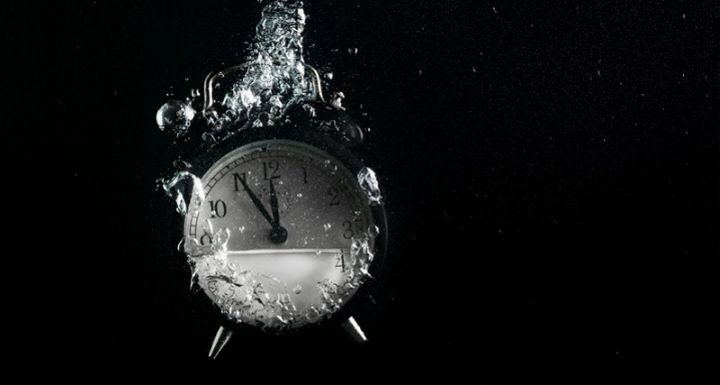The Government Isn’t Moving Quickly to Compensate Camp Lejeune Water Contamination Victims

August 10, 2023, will mark the first anniversary that the Camp Lejeune Justice Act of 2022 (“Justice Act”) became law.
The Justice Act allows Marines, their family members, and any civilians who were poisoned by the toxic water at Camp Lejeune from 1953-1987 to pursue justice for injuries from that contamination.
By this point, everyone has heard the commercials and seen the billboards saying to make a claim under the Justice Act. But, meaningful updates on claims are few and far between. Our goal is to provide a current case update at a macro level.
How Claims Work
Here is a quick breakdown of how Camp Lejeune Water Contamination claims work.
First, victims must file an administrative claim with the Navy. Unfortunately, so far, the Navy has made zero offers to pay on any administrative claims.
Six months after filing an administrative claim with the Navy, a lawsuit can be filed in the federal courts in Eastern North Carolina.
Claims and Lawsuits Are Being Filed, But . . .
Justice Act administrative claims and lawsuits are piling up.
As of May 2023, the Navy has received more than 45,000 administrative claims. Over 900 lawsuits have been filed against the United States government in federal courts in Eastern North Carolina. However, the government hasn’t offered a single penny to resolve a case yet.
United States Files Defenses in Court
Within the past few weeks, the United States filed Answers to the first of many Camp Lejeune lawsuits. In the Answers filed, the United States included some remarkable defenses.
Essentially, the government’s defenses boil down to one argument: the damage caused by the water contamination is the Marines’ and their families’ fault, not the government’s.
For example, in the United States’ Answer filed in Warren v. United States of America, No. 23-cv-00091 (E.D.N.C.), the government asserted “assumption of risk,” “contributory negligence,” and “failure to mitigate damages” as defenses. (Note this document is located behind a firewall in the Public Access to Court Electronic Records, known as PACER. Access requires users to create a free login to access the document, and each page costs $0.10 to view or print.) For purposes of illustration, a few of the United States’ affirmative defenses are noted below:
ELEVENTH AFFIRMATIVE DEFENSE
To the extent that the evidence shows that Plaintiff voluntarily assumed the risks of the occasion, any recovery is barred by Plaintiff’s assumption of risk.TWELFTH AFFIRMATIVE DEFENSE
To the extent that the evidence shows that Plaintiff’s negligence contributed to the cause of any injury, loss, or damage, any recovery is barred, in whole or in part, by Plaintiff’s contributory or comparative negligence.THIRTEENTH AFFIRMATIVE DEFENSE
To the extent that the evidence shows that Plaintiff failed to exercise reasonable care and diligence to avoid or lessen the consequences of any injury, loss, or damage, any recovery incident to such failure is barred by Plaintiff’s failure to mitigate damages.
Similar defenses were asserted in other Camp Lejeune Answers filed by the Department of Justice.
It is likely that Marines, their family members, and others who were seriously injured (many killed) by exposure to Camp Lejeune water will be troubled by the Department of Navy’s failure to offer a dime to settle even a single claim and the defenses the Department of Justice has asserted in response to the initial lawsuits.
Acknowledgement of Causal Contamination
The Department of Justice did, however, acknowledge that the widespread contamination was present for decades, having commissioned studies that concluded this contamination caused numerous terrible diseases.
For example, in Warren, the government’s Answer includes the following:
Paragraph 1: “The United States admits that before December 31, 1987, chemicals from sources on or around Camp Lejeune had seeped into the groundwater below Camp Lejeune. The United States also admits that between August 1, 1953, and December 31, 1987, men and women working or residing on base drank, cooked with, bathed in, and otherwise came into contact with water sourced from the groundwater below Camp Lejeune.”
Paragraph 11: “The United States admits that the Marine Corps Base Camp Lejeune area included disposal areas, a fuel farm, and an extensive infrastructure to treat and provide water throughout the base. The United States admits that some base disposal areas and operations were sources of chemicals that contaminated the soil and groundwater of Camp Lejeune.”
Paragraph 14: “The United States admits that the ATSDR released a report in January 2017 entitled ‘ATSDR Assessment of the Evidence for the Drinking Water Contaminants at Camp Lejeune and Specific Cancers and Other Diseases.’ The United States admits that the purpose of this report was to assess the strength of the evidence supporting causality of adverse health effects from exposures to the drinking water contaminants at Camp Lejeune and that the report concluded there was either ‘[s]ufficient evidence for causation’ or ‘[e]quipoise and above evidence for causation’ for the following diseases with respect to at least one of the chemicals, TCE, PCE, benzene, or vinyl chloride: kidney cancer, non-Hodgkin’s lymphoma, multiple myeloma, leukemias, liver cancer, bladder cancer, Parkinson’s disease, kidney diseases, systemic sclerosis/scleroderma, and cardiac defects.”
The ATSDR report referenced above is available online for free.
Where We Stand Today
Despite the government’s acknowledgement of these facts, it is clear that the government is going to vigorously fight claims filed by Marines, their families, and others affected by this tragedy. Thankfully, the Department of Navy and Department of Justice don’t get to make the final decisions about compensating Camp Lejeune victims – the Federal Court in the Eastern District of North Carolina and juries of Eastern North Carolina do.
The next step in the process will be the Court ruling on Motions to Strike filed by many Plaintiffs. These Motions challenge the legal validity of many defenses asserted by the Department of Justice. For example, see Plaintiff’s Memorandum of Law in Support of Plaintiff’s Motion to Strike Affirmative Defenses filed in the above referenced Warren case. (Note this document is also located behind PACER‘s firewall.)
In their Memorandum of Law, the Plaintiff highlights the frustrating nature of the government’s affirmative defenses, including, for example, “the notion that the hundreds of thousands of Marines, their family members, and other civilians on base ‘assumed the risk’ of unknowingly being poisoned with toxic water on Camp Lejeune—an epic tragedy that the Camp Lejeune Justice Act was enacted to address—is wildly implausible and deeply offensive.”
We Are Representing Plaintiffs
We continue to be involved with this matter and plan to publish periodic updates. As a law firm with four of our five offices in the Eastern District of North Carolina, we are involved from both a professional level—representing our clients—and on a personal level, as we are impacted by victims in our Eastern North Carolina communities.
If you or a loved one were exposed to the contaminated water at Camp Lejeune from 1953-1987 and have been diagnosed with a medical condition linked to the poisoned water, please contact our personal injury attorneys to get advice about potentially pursuing your claim for justice.
###
As of May 31, 2024, we no longer accept new Camp Lejeune Water Contamination cases. See our announcement here.
—
© 2023 Ward and Smith, P.A. For further information regarding the issues described above, please contact Lynwood P. Evans or Taylor Rodney Marks.
This article is not intended to give, and should not be relied upon for, legal advice in any particular circumstance or fact situation. No action should be taken in reliance upon the information contained in this article without obtaining the advice of an attorney.
We are your established legal network with offices in Asheville, Greenville, New Bern, Raleigh, and Wilmington, NC.
Featured News
View All
